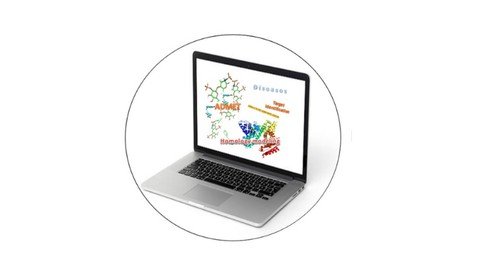
Published 1/2023
MP4 | Video: h264, 1280×720 | Audio: AAC, 44.1 KHz
Language: English | Size: 14.53 GB | Duration: 22h 42m
Drug Design
What you’ll learn
Module 1: Introduction to CADD
Module 2: Ligand-based drug design (Pharmacophore design)
Module 3: Structure-based drug design (target-ligand docking)
Module 4: Significance and limitations of CADD in Drug Discovery
Module 5: Case study
Requirements
A basic level of knowledge about various concepts involved in Chemistry and biotechnology is required.
Description
Computer-Aided drug design(CADD) is an amazing approach that applies computational methods to discover, develop, and analyze drugs and similar biologically active molecules. Over the past few years, CADD has been involved in some of the most significant contributions in the discovery of new drugs, active molecules, etc. One cannot ignore the role of Computer-aided drug design in the vaccine development for the COVID 19 virus.CADD aims to equip you with the knowledge about drug discovery, Ligand-based drug design, structure-based drug design, its importance, and limitations. Each lecture in the courses covers the topics at a perfect pace in an elaborate manner.What this course covers:Module 1: Introduction to CADDOverview of the process of drug discoveryIntroduction to Bioinformatics and Understanding Genomics, Proteomics and CADDDatabasesSequence-Based Search Tool[BLAST]Factors affecting drug discoveryTypes of CADDModule 2: Ligand-based drug design (Pharmacophore design)Pharmacophore ModellingQSAR analysisSimilarity search/clusteringR-group decompositionMatched pair analysisModule 3: Structure-based drug design (target-ligand docking)Introduction to Structure-based Drug Design and process layout of DockingData mining, literature study, and acquisition of target structureComparative modeling of protein (Homology modeling)Active site/ Pocket identification –MetaPocket,CastP,Active site identification using PyMolProtein and ligand preparationDocking analysis (based on binding energy, Hydrogen bond interactions, electrostatic interactions, hydrophobic interactions, etc.)Approaches of Structure-based drug design: Structure-based virtual high-throughput screening, Fragment-based lead discovery, In silico structure-based lead optimization, ADMET modelingModule 4: Significance and limitations of CADD in Drug Discovery and DevelopmentModule 5: Case study
Overview
Section 1: Module 1: Introduction to CADD
Lecture 1 Day 1 : Overall Drug Discovery Process
Lecture 2 Day 2 : Introduction to Bioinformatics and Understanding Genomics, Proteomics an
Lecture 3 Day 3 : Databases
Lecture 4 Day 4 : Sequence Based Search Tool[BLAST]
Lecture 5 Day 5 : Factors Affecting Drug Discovery
Lecture 6 Day 6 : Types of CADD
Section 2: Module 2: Ligand-based drug design (Pharmacophore design)
Lecture 7 Day 7 : Pharmacophore Modelling
Lecture 8 Day 8 : QSAR Analysis
Lecture 9 Day 9 : Similarity Search / Clustering
Lecture 10 Day 10 : R-Group Decomposition
Lecture 11 Day 11 : Matched Pair Analysis
Section 3: Module 3: Structure-based drug design (target-ligand docking)
Lecture 12 Day 12 : Introduction to Structure based Drug Design and process layout of Docki
Lecture 13 Day 13 : Data mining, literature study and acquisition of target structure
Lecture 14 Day 14 : Comparative modelling of protein (Homology modelling)
Lecture 15 Day 15 : Active site/ Pocket identification –MetaPocket, CastP, Active site id
Lecture 16 Day 16 : Protein & Ligand Preparation
Lecture 17 Day 17 : Docking Analysis (based on binding energy, Hydrogen bond interactions,
Lecture 18 Day 18 : Approaches of Structure based drug design: Structure-based virtual hi
Section 4: Module 4 : Significance and limitations of CADD in Drug Discovery
Lecture 19 Day 19 : Significance and limitations of CADD in Drug Discovery and Development
Section 5: Module 5 : -Case study
The courses are designed to suit graduates, postgraduates, teaching, and industry professionals along with research enthusiasts.
Password/解压密码www.tbtos.com